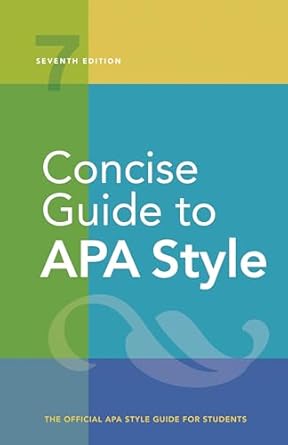[toc]
grammar usage writing with clarity precision
Concise Guide to APA Style: 7th Edition (OFFICIAL)
Page 65 Review
Grammar and Usage: A Deep Dive into Clarity and Precision
Effective communication hinges on the proper application of grammar and usage.
As highlighted in the text, “Incorrect grammar and careless construction of sentences distract readers, introduce ambiguity, and impede clear communication.” This underscores the importance of meticulous attention to detail in writing, especially in academic and professional contexts.
Addressing Common Grammatical Pitfalls
The provided excerpt delves into specific grammatical errors frequently observed in academic papers.
These errors, while seemingly minor, can significantly impact the clarity and credibility of the work.
Let’s examine some key areas:
Verb Tense Consistency
Verb tense plays a crucial role in conveying the temporal context of actions and events.
The text emphasizes the importance of consistent verb tense usage: “Use verb tenses consistently, and stay within the chosen tense to ensure smooth expression.
Sudden, unnecessary shifts in verb tense in the same paragraph or in adjacent paragraphs may confuse readers.”.
The past tense is used when describing actions completed in the past.
The present perfect tense is appropriate when describing a past action or condition that did not occur at a specific, definite time or to describe an action beginning in the past and continuing to the present.
Understanding the nuances of verb tense allows writers to accurately represent the chronology of events and maintain a clear and coherent narrative.
Consider, for example, the difference between “The researcher conducted the experiment” (past tense, specific completed action) and “The researcher has conducted several experiments” (present perfect tense, action spanning from the past to the present).
Active vs.
Passive Voice
The voice of a verb determines the relationship between the subject, verb, and object in a sentence.
The excerpt elucidates the distinction between active and passive voice: “In the active voice, the subject of a sentence is presented first, followed by the verb and then the object of the verb (e.g., ‘students completed surveys’).
In the passive voice, the object of the verb is presented first, followed by the verb (usually a form of ‘to be’ + past participle + the word ‘by’) and then the subject last (e.g., ‘surveys were completed by students’); sometimes, the subject is omitted altogether, resulting in confusion about who is performing the action.”
While both voices have their place, the active voice is generally preferred for its directness and clarity.
It clearly identifies the actor performing the action, resulting in more concise and engaging prose.
The passive voice can be useful when the actor is unknown or unimportant, or when the focus is on the action itself.
However, overuse of the passive voice can lead to wordiness and ambiguity.
For example, instead of writing “Mistakes were made,” a more active and direct sentence would be “The team made mistakes.”.
Phrasing and Clarity: Avoiding Ambiguity
The text also touches upon the importance of clear and unambiguous phrasing, particularly when introducing topics or describing research findings.
Phrases like “this section addresses’ or ‘the chapter focuses on’” are suggested as effective ways to introduce the content of a specific section or chapter.
Similarly, phrases such as “the results suggest,’ ‘the data provide,’ ‘the research contributes,’ or ‘the study found’” are recommended for presenting research outcomes.
The Pitfalls of Anthropomorphism
Anthropomorphism, the attribution of human traits to non-human entities, is another area of concern.
The excerpt acknowledges the challenges in defining anthropomorphism and advises writers to prioritize clear communication: “Determining what constitutes anthropomorphism can be challenging, and even distinguished scholars may disagree.
In ambiguous cases, we recommend that you keep the principle of clear communication at the forefront of your word choice and sentence structure.”
Avoiding anthropomorphism is essential for maintaining objectivity and accuracy in academic writing.
While it can be tempting to use figurative language to make writing more engaging, it’s crucial to ensure that such language does not distort the facts or mislead the reader.
Conclusion: Striving for Grammatical Excellence
In conclusion, the excerpt underscores the vital role of grammar and usage in effective communication.
By adhering to principles of verb tense consistency, judicious use of active and passive voice, and avoidance of ambiguity, writers can enhance the clarity, credibility, and impact of their work.
As the text emphasizes, careful attention to these details is paramount for achieving grammatical excellence and ensuring that the intended message is conveyed with precision and accuracy.
Buy full ebook for only $18: https://www.lulu.com/shop/american-psychological-association/concise-guide-to-apa-style-7th-edition-official/ebook/product-rmzpq54.html?page=1&pageSize=4
Grammar Usage Writing With Clarity Precision
Read more: Mastering Reference List Order: A Guide

